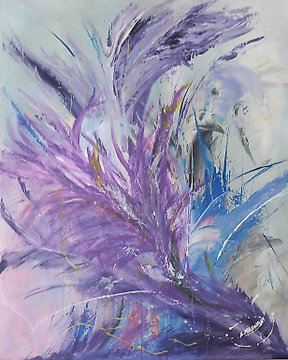
Loretta Magnani - Giardino scomposto
Nr. 83078231

Nr. 83078231

Samuel Tete-Katchan was born in 1975 in Vogan, Togo, and currently resides in Accra, Ghana. He ended his secondary school education in 1997. Shortly after his secondary education, he began training at the studio of Mr. Joseph Amedokpo, where he developed his own style from the ‘Oshogbo Art’ of south-western Nigeria. One year later, he started exhibiting his paintings. He attended the Instituto Rural de Arte Hosz del Jucar (Albacete in Spain) in 2007. Samuel Tete-Katchan is a cultural agent, graphic designer, and painter by profession who has taken advantage of numerous opportunities to use art as a medium for social development by working on various art projects which have a direct impact on communities.
Notable works
In 1999, Samuel held the first edition of Vitraux de Vie (Stained-Glass Windows of Life) where he first exhibited a series of his works, during the Semaine de La Francophonie (Francophone Week) in March, organized at Alliance Française- the French Cultural Center- in Accra, Ghana. He also participated in PANAFEST "99", the Pan African Historical Theater Festival in Ghana as an exhibitor.
In 2000, Samuel worked on a mural painting in Cape Coast, Ghana under the "Public Art Initiative", a project sponsored by the USAID. In March 2000, he participated in the Martin Luther King, Jr. International Design Competition in Washington, DC.
In 2001, he participated in "PANCA" and "EWOLE 5", two very popular fairs in Togo, his native land. He also added to his artistic portfolio the painting of religious scenes in his hometown's Catholic Church, St. Ferdinand de Vogan.and participated in "PANAFEST 2001" in July.
In 2002, Samuel was noticed by the former French Cultural Attaché, Denis Decreane who became a major patron of his work. Denis commissioned a mural painting on the front wall of his residence to Samuel in 2003.
In October 2003, Samuel exhibited his works at the second edition of Vitraux de Vie tagged Vitraux de Vie 2 at Alliance Française Accra. In line with his vision, he organized his first Non-Violence Week in 2003 at Espace Greenfield, a cultural hub in Togo as a call to freedom and non-violence. The major activities that took place during that Non-Violence Week were a painting exhibition, a press conference, and a radio interview.
In 2004, Samuel joined the Rapid Painting Competition or Fast Painting Competition organized by the Spanish Embassy in Accra, Ghana, and was awarded the first prize for the re-interpretation of one of the works of the Baroque Spanish artist, Don Diego de Silva Velázquez, entitled La Familia de Felipe IV, also, known as Las Meninas. After the Rapid Painting Competition in 2004, Samuel continued to study Las Meninas and worked on a series of his own re-interpretations of this emblematic work of the history of Spanish art.
In November 2005, the Spanish Embassy of Ghana exhibited this series of Samuel’s work at Goethe Institut. In his view, the painting Las Meninas is symbolic of the ‘family unit' in the world of art. This series of his re-interpretation of Velázquez's repertoire is characterized by the usage of bright colors and various shapes and forms; which translates into the celebration of the universal family.
The infant Doña Margarita, one of the main characters of Velázquez's painting, Las Meninas, according to Samuel stands for children of all races and backgrounds. In December 2005, Samuel completed two mural paintings of religious scenes for Our Lady of Mercy Catholic Church in Tema, Ghana. One painting depicts The Last Supper and the other, the Resurrection.
In September 2006, he did a mural painting of Saint Francis Xavier for Saint Francis Xavier Catholic Church, Kotobabi, Ghana, as well as the third edition of Vitraux de Vie at Alliance Française, Accra, Ghana from September 18-30.
So kaufen Sie auf Catawiki
1. Etwas Besonderes entdecken
2. Höchstgebot abgeben
3. Sichere Zahlung durchführen